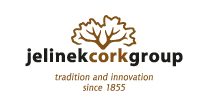Natural cork is the bark of the cork oak tree – a completely renewable, sustainable and recyclable product. Once harvested from the tree, it is made into various cork products including wine stoppers. These wine stoppers are used in bottles of wine. But what happens to the cork after the bottle has been finished? Currently, many stoppers end up back in the landfill. With wine consumption on the rise (and even when it wasn’t), that is a lot of cork heading into the landfill. Why not recycle your wine corks and keep them out of the landfills. Learn more…
HARVEST
Cork harvesting is the process of removing the bark off the cork tree. This is an extremely delicate operation made to look easy by the expertise of the cork harvesters. These experienced individuals use a machete to slice the bark into sections (the larger the section the better) and then they use a metal wedge to peel these sections from the trees. Although this is very strenuous work in itself, the harvesters need to take great care not to damage the very thin skin-like membrane which is found between the bark and the inner trunks of each tree. Every tree, therefore, is a source of renewed raw material. The cork is cut from the same trees time and time again. This goes on for generation after generation for some 200 years. A tree in its prime at 80 years old can yield 440 lbs (200 kg). This is sufficient raw material to produce approximately 25,000 natural wine corks.
CREATE
There is no other material, either human-made or natural, with all the properties and characteristics that are unique to cork : light weight, rot resistant, compressible and recoverable, expandable, fire resistant in its natural state, impermeable, soft, and buoyant. Because of this unparalleled combination of properties, cork raw material has a wide variety of applications. With its light-weight honeycomb structure and its flexible membrane, cork is the ideal material for products ranging from stoppers to floats, from floor and wall coverings to gasket material, from clothing to coasters.
RECYCLE
In an effort to divert additional waste from the landfill, all cork waste from the manufacturing process, defective corks and natural cork bottle stoppers that are discarded after their use in a bottle is done are collected. This is all ground up into granulated cork or cork grain.
RE-CREATE
This cork grain is then used to make many other cork products including cork flooring, cork rolls & cork sheets, cork wall tiles and bulletin boards.
“Cork is a game changer. Recycling cork saves the planet and then some”










